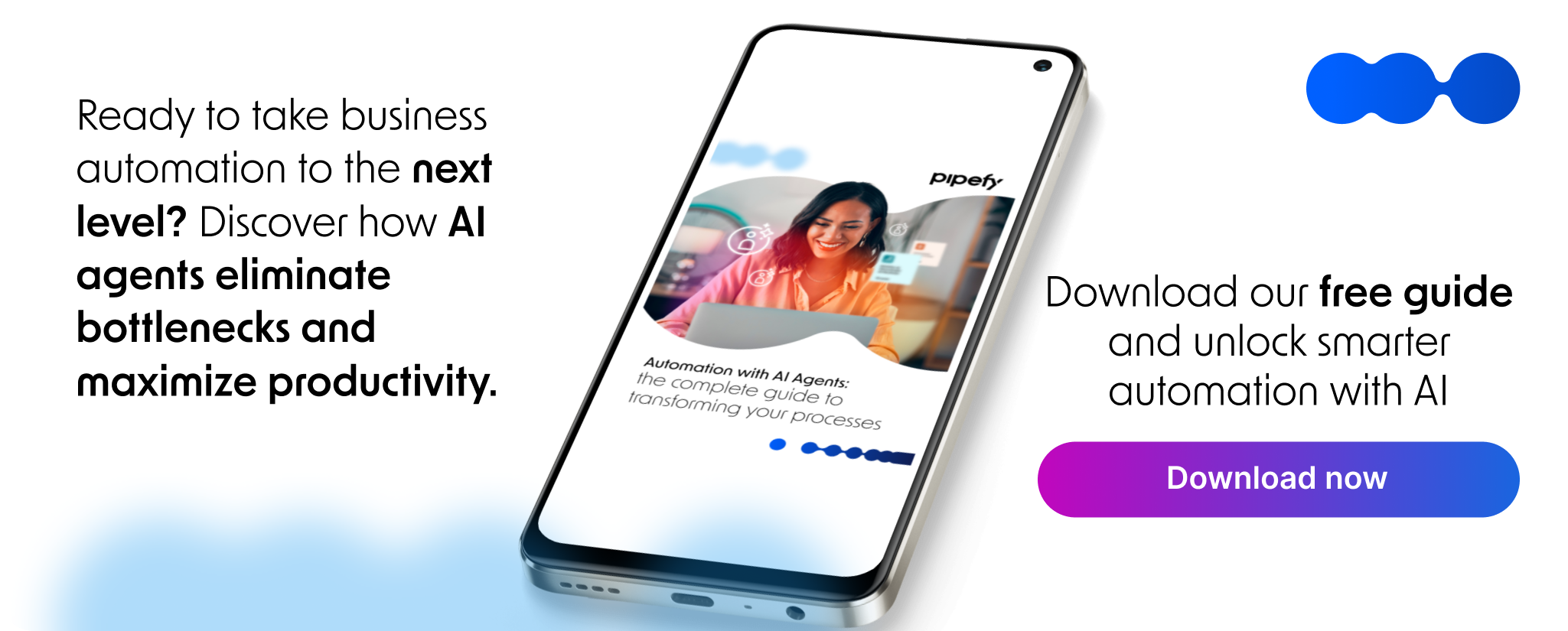
In the fast-paced world of real estate, speed is currency. Every delay, every misplaced document, and every manual follow-up can mean the difference between closing a high-value deal and losing it to a more agile competitor. Yet, many firms are still held back by an often-overlooked bottleneck: a slow and cumbersome property intake process. This critical first step, which should be a smooth runway for new listings, too often becomes a traffic jam of paperwork, emails, and manual data entry.
For property managers, brokerages, and investment firms, an inefficient property intake workflow doesn’t just waste time; it erodes profit margins, frustrates agents, and delivers a poor first impression to clients. The challenge lies in transforming this foundational process from a manual chore into a strategic advantage.
This article will explore how modern real estate businesses can move beyond outdated methods. We will detail how smart real estate workflows, powered by no-code automation and intelligent technology, can dramatically speed up your property intake, enhance data accuracy, and empower your team to focus on what they do best: building relationships and growing the portfolio.
What is Property Intake (And Why is it Often So Slow)?
Before optimizing the process, it’s crucial to understand its scope. Property intake is the comprehensive workflow for bringing a new property into a company’s system. This isn’t just about filling out a form; it’s an end-to-end process that includes gathering detailed property information, collecting and verifying legal documents, coordinating with multiple stakeholders, and setting up the property in management or marketing systems.
In many real estate firms, this process remains notoriously manual and fragmented. The primary reasons for the slowdown include:
- Fragmented Data Collection: Information arrives from dozens of sources (emails, phone calls, PDF forms, and text messages). This lack of a standardized entry point leads to inconsistent and incomplete data that requires extensive manual cleanup.
- Manual Document Management: Team members spend countless hours manually handling, scanning, and filing documents like property deeds, lease agreements, inspection reports, and owner information. This manual document management is a significant source of errors and delays.
- Lack of Visibility: Without a centralized system, it’s nearly impossible to know the real-time status of a new property onboarding. Managers and clients are left in the dark, leading to constant follow-up emails and phone calls that disrupt productivity.
- Compliance and Error Risks: Manual data entry and document handling are prone to human error. A misplaced decimal or an overlooked clause in a contract can lead to serious compliance issues and financial risk down the line.
These combined factors turn what should be an efficient process into a significant operational drag, directly impacting a firm’s ability to scale.
Why Streamlining Real Estate Workflows is a Top Priority
The real estate industry recognizes these challenges and is actively seeking solutions. The focus on technology is no longer a niche trend but a mainstream strategic priority. According to the National Association of Realtors’ 2024 “Real Estate in a Digital Age” report, a significant 58% of firms stated that adopting new technologies to improve process efficiency is a top focus for the next two years.
This statistic highlights a crucial market shift. Firms understand that manual processes are no longer sustainable in a competitive digital landscape. The pressure to “speed up” is not just about convenience; it’s a fundamental business need.
Streamlining foundational real estate workflows, especially the initial property intake, is now seen as the key to unlocking greater productivity, enhancing client satisfaction, and building a more scalable business model. The question is no longer if firms should automate, but how they can do it effectively.
Read more: Learn why everything is a workflow — even when it doesn’t look like one
The Dangers of a Manual Property Intake Process
To fully grasp the urgency, it helps to contrast the old way with the new. A manual process introduces risks and inefficiencies at every step, while an automated workflow provides strategic benefits that extend across the entire organization.
| Aspect | Manual Process (The Risk) | Automated Workflow (The Benefit) |
| Data Accuracy | High risk of typos, outdated information, and missing fields from manual data entry | Data is captured once through standardized forms and validated automatically, ensuring consistency and accuracy |
| Processing Speed | Days or even weeks, slowed down by physical paperwork, email chains, and manual handoffs | Hours or minutes, as tasks are routed instantly and documents are processed automatically |
| Client Experience | Opaque and frustrating, with clients having no visibility into the status of their property onboarding | Transparent and professional, with automated updates keeping clients informed at every stage |
| Compliance & Audit | Difficult to track, with a high risk of lost documents and no clear audit trail of who did what, when | Every action is logged automatically, creating a complete and easily searchable audit trail for compliance |
| Team Productivity | Agents and staff are bogged down in low-value administrative work instead of focusing on clients | Teams are freed to focus on high-value activities like client relations, market analysis, and deal-making |
The Core Components of a High-Speed Workflow
Transitioning from a manual to an automated system involves using a few key technological components that work together to create a seamless and efficient process. Let’s take a closer look at them:
Centralized Portals for Standardized Submissions
The first step to eliminating chaos is to create a single source of truth. A modern automation platform allows you to build secure, user-friendly portals or forms where property owners, agents, or tenants can submit all necessary information and documents in a standardized format. This immediately ends the reliance on scattered emails and ensures all data is structured correctly from the start.
Intelligent Document Processing (IDP)
This is where the real magic happens for document management. IDP technology goes far beyond simple scanning. It uses Artificial Intelligence (AI) to read and understand various document types. It can automatically extract key information, such as owner names from a deed, lease terms from an agreement, or property values from an appraisal, and populate it directly into your workflow, eliminating manual data entry entirely.
Automated Workflow and Case Management
Once the data is captured and structured, a robust workflow and case management engine takes over. This is the “brain” of the operation. It automatically routes tasks to the right people, sends notifications for approvals, tracks deadlines, and manages the entire process from submission to completion. This ensures that nothing falls through the cracks and that every step is executed in the proper sequence without manual intervention.
Sample Scenario: A Brokerage Streamlines its Property Intake
To see how these components come together, let’s consider a hypothetical mid-sized real estate brokerage. They are successful but struggling to grow because their manual property intake process is creating a bottleneck, delaying new listings from hitting the market.
To solve this, the brokerage could implement Pipefy, a no-code platform that empowers them to design and deploy their own custom real estate workflows.
Here is how their new process might work:
- Standardized Submission: An agent with a new listing no longer sends a jumble of emails and attachments. Instead, they access a dedicated “New Property Intake” portal on Pipefy and fill out a standardized form, uploading all necessary documents directly.
- Automated Data Extraction: As soon as the documents are uploaded, Pipefy’s IDP capabilities, powered by AI Agents, would scan the property deed, tax records, and listing agreement. It would automatically extract key details like the property address, owner’s name, parcel number, and listing price, and populate the fields in the workflow.
- Intelligent Task Orchestration: With the data captured, the workflow would spring into action. It could automatically:
- Assign a task to the marketing team to schedule photography and write a property description.
- Send a notification to the legal team to review the title report and contracts.
- Create a task for the office administrator to order a “For Sale” sign and a lockbox.
- Real-Time Visibility: At any moment, the managing broker could look at a dashboard in Pipefy and see the exact status of every new property intake, identifying any potential delays before they become problems.
In this scenario, the brokerage would drastically reduce its listing-to-market time, eliminate costly data entry errors, and free up its agents to focus on building client relationships and closing more deals.
Read more: How to choose the right AI Agent for your process automation
FAQ about Property Intake
1. What is the difference between simple document management and IDP?
Traditional document management is often just digital storage, like a shared drive. You still need to manually find, read, and use the information within the documents. IDP is an active technology that uses AI to automatically read, understand, and extract data from those documents, turning static files into actionable information that powers your workflows.
2. Can an automation platform integrate with my existing real estate software?
Yes, this is a critical feature. Modern no-code platforms are built to be open and connected. Using APIs and pre-built connectors, you can integrate your workflows with essential real estate tools like MLS systems, CRM software, and accounting platforms, creating a truly unified tech stack.
3. Is a no-code platform powerful enough for complex real estate workflows?
Yes, no-code platforms have evolved far beyond simple task automation. They now offer enterprise-grade features like complex business rules, AI capabilities, and robust workflow and case management, allowing you to build sophisticated, multi-stage processes tailored to the specific needs of the real estate industry without writing any code.
4. How does improving property intake affect the rest of the business?
The impact is far-reaching. A faster, more accurate property intake process leads to quicker listings, which means faster sales and commissions. It enhances your firm’s reputation with clients, improves team morale by reducing frustrating administrative work, and creates a scalable foundation that allows your business to grow without a proportional increase in headcount.
5. What is the first step to automating my property intake process?
The best first step is to map out your current process. Visually flowchart every step, from the initial client contact to the final system setup. This will immediately highlight the biggest bottlenecks, manual handoffs, and areas of risk. Once you have this clarity, you can begin designing a smarter, automated workflow on a no-code platform.
How Pipefy Speeds Up Your Property Intake
Navigating the complexities of the real estate market requires technology that is both powerful and accessible. Pipefy is a no-code automation platform that empowers real estate professionals to take complete control of their operations. It provides all the tools you need to transform your property intake from a slow, manual process into a high-speed, automated engine for growth.
With Pipefy, you can design custom portals, automate document management with AI-powered IDP, and orchestrate complex real estate workflows with an intuitive drag-and-drop interface. It gives you the power to eliminate bottlenecks, increase data accuracy, and provide total visibility over every new property entering your portfolio.
Click the button below to book a demonstration and find out how Pipefy’s no-code platform can transform the way you do business:







